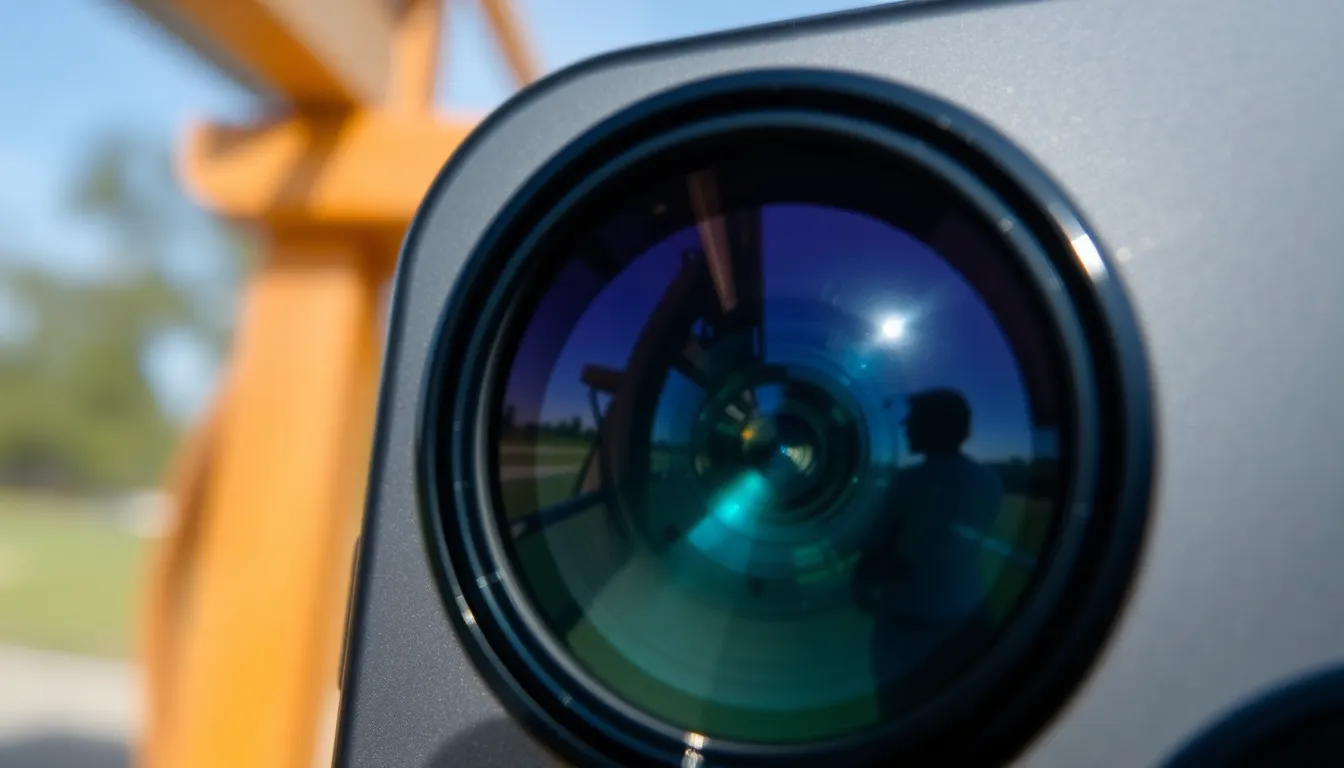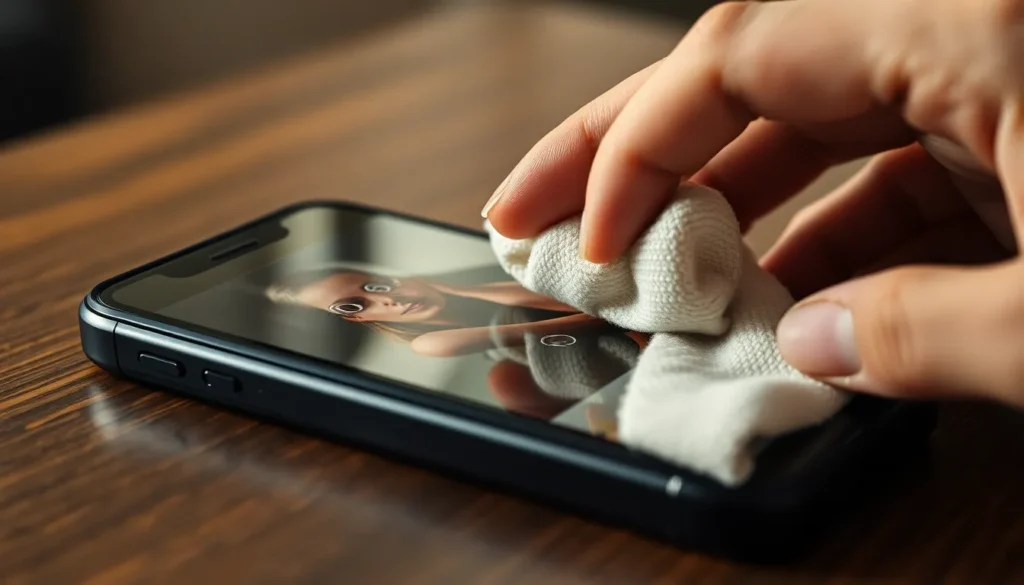Table of Contents
ToggleEver snapped a picture on your iPhone, only to discover it looks like it was taken through a foggy window? You’re not alone. Many iPhone users face the frustrating mystery of blurry photos, and it can feel like their phone’s camera is playing a cruel joke.
Why Do My iPhone Pictures Look Blurry
Many factors contribute to blurry iPhone pictures. Cleanliness of the lens is crucial; smudges or dirt can distort images. Focus settings also play a vital role. When the camera lacks proper focus, resulting images appear hazy.
Lighting conditions significantly affect photo clarity. Low light situations cause the camera to struggle, leading to blurred photos. Inadequate light may prompt slower shutter speeds, creating motion blur.
Camera settings impact quality. Enabling options like HDR often enhances detail in challenging scenarios, while failing to utilize this feature may yield disappointing results. Additionally, the use of digital zoom compromises image quality; it often results in pixelation.
Software issues can create problems as well. Outdated operating systems may cause camera malfunctions or hinder performance. Regular software updates improve functionality and fix bugs, enhancing photo quality.
Lastly, phone movement affects clarity. When taking pictures, holding the iPhone steady is essential; any movement can blur the image. Leveraging a tripod or stabilizing the device can remedy this issue.
Understanding these aspects provides insight into resolving blurry iPhone pictures. With attention to detail and specific adjustments, users can significantly improve photo clarity.
Common Causes of Blurry iPhone Pictures

Blurry pictures often stem from various issues. Identifying these causes aids in capturing sharper images.
Camera Lens Issues
Smudges and dirt on the camera lens frequently affect image clarity. Inspect the lens regularly for fingerprints and debris. Cleaning it gently with a microfiber cloth enhances optical performance. A case that partially blocks the lens can also lead to blurred photos. Removing any obstruction ensures the camera captures images as intended.
Software Glitches
Outdated software may interfere with camera functionality and cause blurry photos. Regular updates optimize performance and fix bugs. Restarting the iPhone can also resolve minor glitches affecting the camera app. When the camera app misbehaves, closing and reopening it typically resolves the issue. Performing a reset of settings may help restore the camera’s normal operation.
Poor Lighting Conditions
Low lighting consistently results in blurry photographs. Dim environments cause slower shutter speeds, leading to motion blur, especially with unsteady hands. Utilizing natural light when possible improves image clarity. Using the flash can provide additional illumination, but it may create harsh shadows. Experimenting with different lighting setups or using external lights can significantly enhance photo quality.
Tips to Improve iPhone Photo Quality
Enhancing iPhone photo quality involves some straightforward techniques. Users can address common issues effectively by following these tips.
Clean the Camera Lens
Keeping the camera lens free from smudges is vital. Dirt accumulation can blur images significantly. Regularly inspect the lens for fingerprints and dust. Gently clean it with a microfiber cloth for optimal results. Avoid using rough materials that may scratch the surface. This simple maintenance step often leads to clearer and sharper photos.
Adjust Camera Settings
Camera settings can greatly influence photo clarity. Enabling HDR captures a broader range of light, which helps enhance detail. Users should also avoid excessive digital zoom, as it can lead to pixelation. Instead, users might consider moving closer to the subject for better results. Additionally, turning on gridlines aids composition, helping users frame their shots effectively. Regularly reviewing settings ensures optimal photography experiences.
Use Proper Lighting
Sufficient lighting is essential for capturing high-quality images. Poor lighting often results in motion blur and loss of detail. Users should take advantage of natural light whenever possible. Positioning subjects near windows or outdoors can enhance brightness. Experimenting with artificial lights can also yield better results. Adjusting exposure settings can help in varying lighting conditions, ensuring vibrant and well-lit photographs.
When to Seek Professional Help
Blurry iPhone pictures persist despite user attempts to fix them. Users facing this ongoing issue should consider seeking professional assistance. An expert can diagnose underlying problems that cause recurrent blurriness. Identifying hardware or software issues often requires specialized knowledge.
Consider visiting an Apple Store or authorized service center if the camera lens is scratched or damaged. Repairs in these establishments provide a higher chance of restoring image clarity. Frequent software glitches may signal an underlying issue that warrants professional evaluation.
Users might notice severe camera malfunctions, such as failure to focus correctly after trying common troubleshooting techniques. Persistent issues like these can hinder photography quality significantly, making professional support necessary.
Seek guidance when noticing inconsistencies in photo quality that standard solutions don’t improve. Taking blurry photos sporadically might reflect a deeper technical problem, thus justifying professional intervention.
Evaluate whether warranty coverage applies to the device before pursuing repairs. Warranty services may cover both hardware malfunctions and software-related issues. Assessing this can lessen costs and speed up the repair process.
If users experience frustration despite applying cleaning techniques and adjusting settings, calling in a professional guarantees reassurance. This step ensures that high-quality photography remains achievable with their iPhone.
Blurry iPhone pictures can be frustrating but identifying the causes can lead to clearer images. Regularly cleaning the camera lens and ensuring proper lighting are simple yet effective solutions. Adjusting camera settings and avoiding digital zoom can also make a significant difference.
For those who still struggle with blurry photos after trying these tips, seeking professional help might be necessary. An expert can assess any underlying issues that may be affecting camera performance. By understanding these factors and taking proactive steps, iPhone users can greatly enhance their photography experience and capture sharper images.




